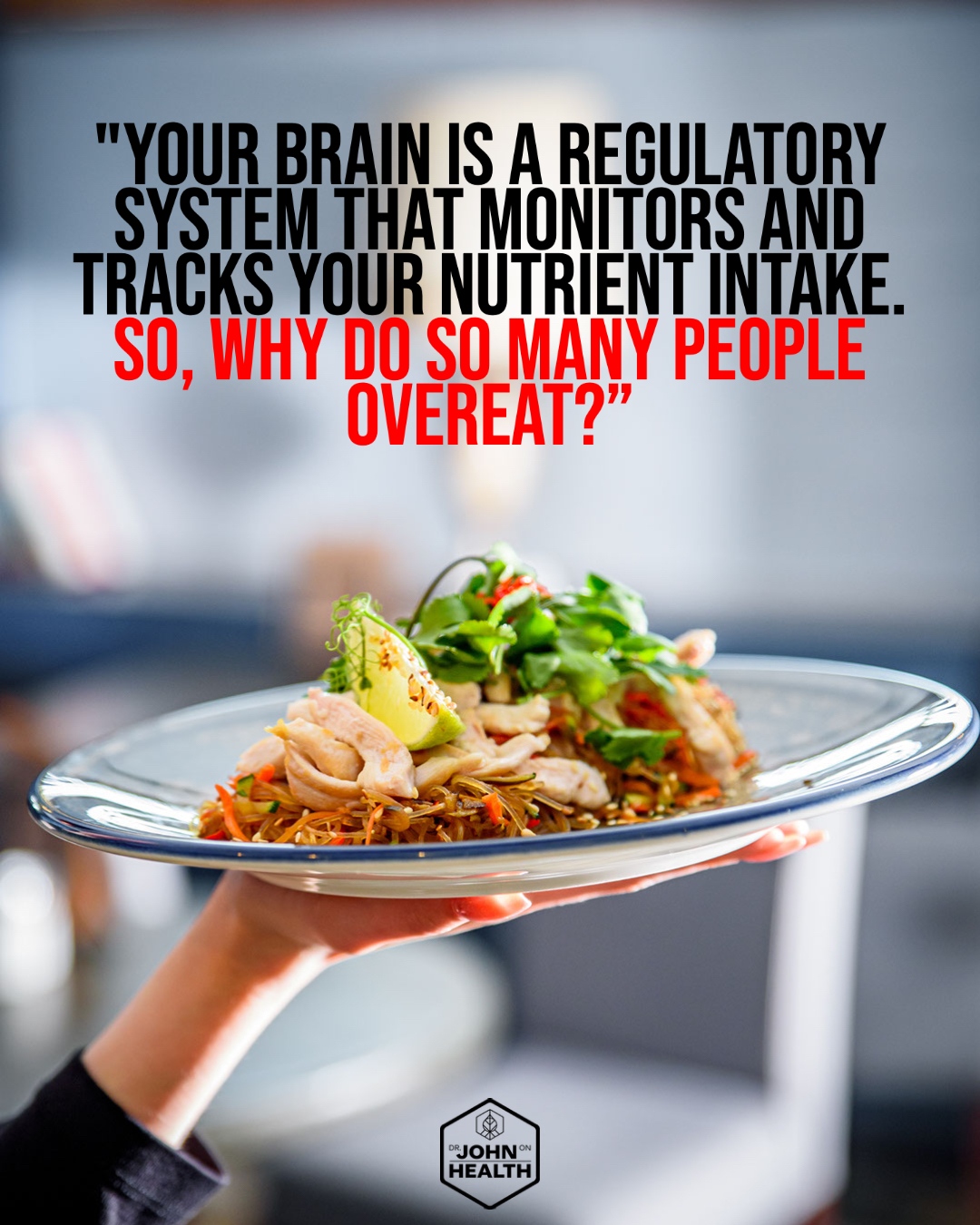Reading Time: 4 minutesIn recent years, there’s been a tidal wave of beverages hitting the shelves — sodas, energy drinks, iced teas, sports drinks, flavored waters, coffee concoctions — all dressed up and deliciously sweetened. But behind the flavor? A hidden danger. Most of these beverages are loaded with added sugars, often in the form of high-fructose corn syrup, a highly processed and inexpensive sweetener used to hook your taste buds — and hijack your health. These taste-enhancing additives are doing more than just making drinks irresistible. They are a major contributing factor…
Read MoreAuthor: Dr. John Poothullil
How Our Conscious Choices Override Our Need for Nutrients
Reading Time: 3 minutesFrom birth, our bodies are finely tuned to meet our nutritional needs. Infants triple their birth weight in the first year, driven by an instinctual drive to feed. As we grow, our nutritional requirements evolve, often imperceptibly. Toddlers experience a natural decline in appetite, coinciding with slower growth rates. Adolescents undergo growth spurts, requiring increased caloric intake, yet they often maintain lean physiques as their bodies efficiently utilize energy. However, as adults, our eating patterns become influenced by various factors beyond mere nutritional needs. Cultural norms, social settings, and emotional…
Read MoreKnowing When To Stop Eating
Reading Time: 4 minutesYour brain informs you when to stop eating during a meal. Paying attention to your “satisfaction” (also called “satiation”) signals is just as important as being aware of your hunger signals. During a meal, the brain receives messages from the mouth, the stomach, the intestines, and the blood—all of which combine to help it assess when enough nutrients have been consumed to satisfy the demand for nutrition from the body’s cells. Like hunger, satiation signals are highly dependent on your nutritional status. At some meals, you’ll need to consume a…
Read MoreThe Food Pyramid & Fighting Against The Grain
Reading Time: 4 minutesShould I eat according to the 2023 Food Pyramid? The first Food Pyramid was created in the 1970s in Sweden by a special committee to suggest nutritionally balanced meals at a reasonable cost. In 1992, the United States Department of Agriculture (USDA) introduced a Food Pyramid to recommend servings of each food group, which previous guides did not do. The 2023 Food Pyramid modified the recommendations in an attempt to improve the health of Americans who continued to experience increasing incidences of cardiovascular diseases and Type 2 diabetes. For example,…
Read MoreDr. John Explains Hunger and “Eating Like A Toddler”
Reading Time: 4 minutesTo understand hunger, you don’t need to look any further than the mechanism by which babies regulate their consumption of milk, or toddlers regulate their consumption of food. If you think about it, both infants and toddlers decide on their own when to eat, what to eat, and how much to eat to thrive physically, mentally, and emotionally. When you were an infant and then a toddler, this is what you did. So today, to lose weight, you need to alter your eating habits, so you can eat as you…
Read MoreSoaring U.S. Healthcare Costs Part 2: The Proposal
Reading Time: 5 minutesIn this article, I my proposal for how we can reduce the costs of healthcare by implementing a system of periodic assessments of CPT codes and costs. I am not suggesting that all CPT codes are unnecessary or wasteful. My point is that there is a lack of periodic reassessment of healthcare costs associated with caring for people with Type 2 diabetes. Such a reassessment would likely find better explanations for what causes high blood sugar and diabetes in adults and better, less costly ways to treat it. Two basic…
Read MoreFood for Thought: Why We Shouldn’t Count Calories
Reading Time: 6 minutesTo maintain health, humans must have a constant supply of nutrients to feed the cells in the body. Maintaining a steady but dynamic state requires that we acquire sufficient varied nutrients regularly from the foods we consume. Nutrients are absorbed in the form of molecules and ions into the bloodstream, where cells absorb them and utilize them to perform their functions. This process requires the use of energy, just like what happens in a factory that manufactures goods. It is this use of energy that produced the rationale for creating…
Read MoreTrick or Treat: The Really Scary Sugar To Fear This Halloween
Reading Time: 5 minutesFor many, the overwhelming access to sugar is a scary fact about Halloween and all the upcoming holidays. Added sugar is often thought of as the cause of weight gain, obesity, and diabetes. “Added sugar” is actually what you need to be concerned about. Added sugars account for about 17 percent of the total calorie intake of adults and up to 14 percent for children, according to a recent study. Many people are confused about whether added sugar is the same as sugar (glucose) in your bloodstream. The answer is…
Read More







